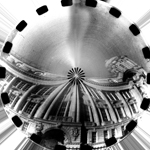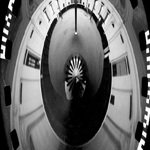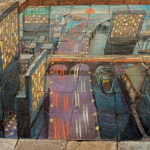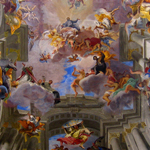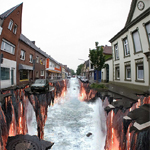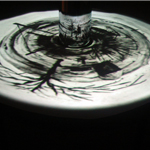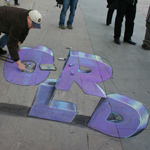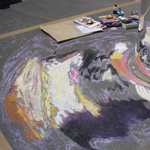
Anamorphosis is an artistic technique that creates an optical illusion that tricks the eye and by which the artist may conceal messages or images within a design. When viewed straight-on, the hidden element appears unrecognizable. Only when the observer shifts position and views the drawing or painting from a specific angle is the distorted image reconstituted into its proper perspective.
For many centuries, artists remained ignorant of the techniques required to create perspective, so that paintings appeared flat in aspect, or two dimensional. As the use of perspective developed and then flourished in the art of the early Renaissance, the more artists experimented with the possibilities of creating visual tricks and illusions. One of the most significant techniques, or 'tricks' was the way an image could change depending on where the viewer stood in relation to it. Erotic, bawdy or vulgar scenes - it was discovered with delight - could be hidden from the unsuspecting viewer and confided to a select few. The key to interpretation lay with the artist, who could give it to those in his confidence.
The technique of anamorphosis continues to inspire artists, tattooists, and film makers. The recent film, Anamorph, employs the visual effect as a crucial part of the plot. Contemporary artists have taken anamorphosis to new heights. In many parts of the world, particularly in Europe and Japan, there has been a ‘renaissance’ of this visual manipulation. Pavement artists are bending the brain with their chalk drawings, causing optical illusions that confound the passers by -- when viewed from that all-important critical angle.
In the tattoo world, anamorphic designs introduce an element of intrigue. Anyone with an anamorphic image can choose who to reveal it to and how to hide it, and there is a powerfully intriguing element in hiding a design within a design.


